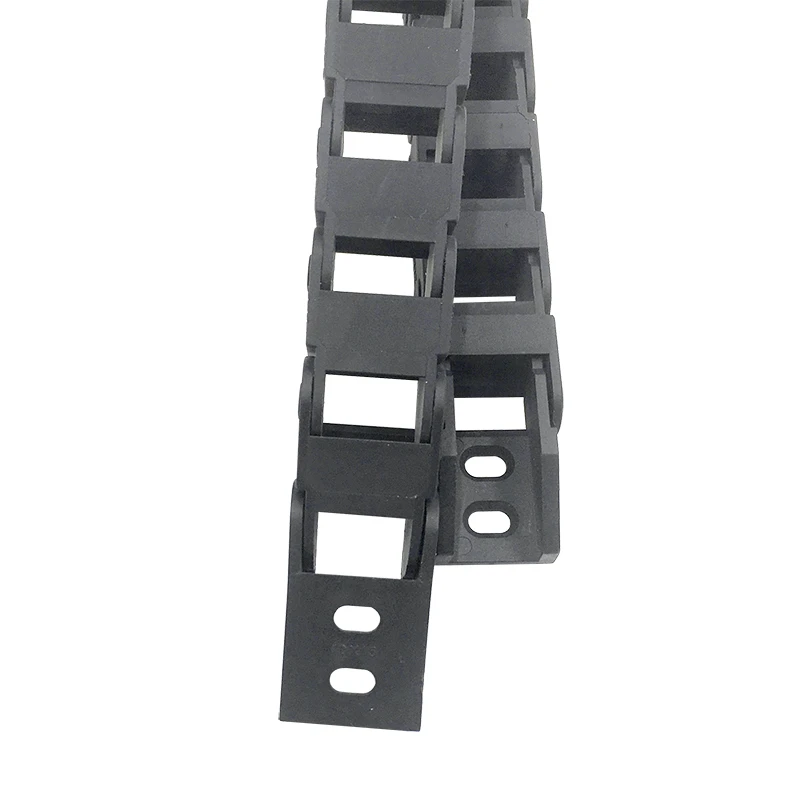Flexible Drag Chain Solutions for Enhanced Cable Management and Protection
Understanding Drag Chain Compatibility A Comprehensive Overview
In today’s fast-paced industrial environment, the efficiency and longevity of machinery are paramount. One of the key components that play a critical role in achieving these objectives is the drag chain, also known as energy chain or cable carrier. The importance of drag chain compatibility is often overlooked, yet it is integral to the smooth operation of automated systems. In this article, we will explore the concept of drag chain compatibility, its significance, and how to ensure that your machinery benefits from the right choices in drag chain technology.
What is a Drag Chain?
A drag chain is a flexible and robust carrier that organizes and protects the cables, hoses, and other vital components in a machine. Used in various applications—ranging from CNC machining, robotics, and conveyor systems to cranes and machine tools—drag chains facilitate smooth movement while minimizing wear and tear on cables and hoses. They are designed to withstand dynamic movements, harsh environments, and substantial mechanical stress, which makes them essential in preserving the life of wiring systems in industrial operations.
Why is Drag Chain Compatibility Important?
The compatibility of drag chains with specific machines and their applications is crucial for several reasons
1. Efficiency Properly compatible drag chains ensure that the cables or hoses move seamlessly with the machinery, reducing friction and allowing for better performance. Incompatible chains can lead to increased resistance and downtime, negating the benefits of an otherwise well-designed system.
2. Durability Drag chains are engineered to work under specific conditions and limitations. Using an incompatible chain may result in faster degradation, requiring more frequent replacements and increasing maintenance costs.
3. Safety An incompatible drag chain can cause jamming or entanglement, posing safety risks for operators and machinery alike. Ensuring compatibility minimizes the likelihood of such hazards, promoting a safer working environment.
4. Cost-Effectiveness Investing in compatible drag chains may seem like a higher upfront cost, yet the long-term savings in maintenance, replacement, and potential downtime make it a wise choice. By selecting the right drag chain, companies can improve their operational efficiency and reduce unexpected expenses.
drag chain compatible

Factors to Consider for Drag Chain Compatibility
When selecting a drag chain for a specific application, several factors need to be evaluated
1. Size and Dimensions The size of the drag chain must align with the dimensions of the cables or hoses it will carry. Ensure that there is enough space within the chain to accommodate all components without causing excessive bending or stressing.
2. Material Compatibility Different drag chains are made from various materials, such as plastic, metal, or hybrid compositions. The material choice should reflect the operational environment, including factors like temperature, humidity, and potential exposure to chemicals.
3. Movement Type Drag chains are designed for specific types of motion—linear, rotary, or multi-dimensional. It is crucial to choose a drag chain that matches the movement profile of the machinery to avoid misalignment and operational inefficiencies.
4. Load Capacity Consider the weight and type of cables or hoses being carried. Each drag chain has a specified load capacity, and exceeding this limit can lead to mechanical failure.
5. Bending Radius Understanding the bending radius is essential to prevent kinking or excessive wear on the cables. Drag chains come with specified bending radii, and choosing one that suits your application is key to maintaining the integrity of your wiring systems effectively.
Conclusion
In conclusion, drag chain compatibility is an essential aspect of equipment design that should not be underestimated. The right choice can enhance the efficiency, safety, and longevity of machinery while reducing overall costs and maintenance demands. By considering factors like size, material, movement type, load capacity, and bending radius, engineers and managers can make informed decisions that will lead to improved operational performance. As industries continue to advance and evolve, understanding and implementing drag chain compatibility will remain a fundamental component of successful equipment management.








